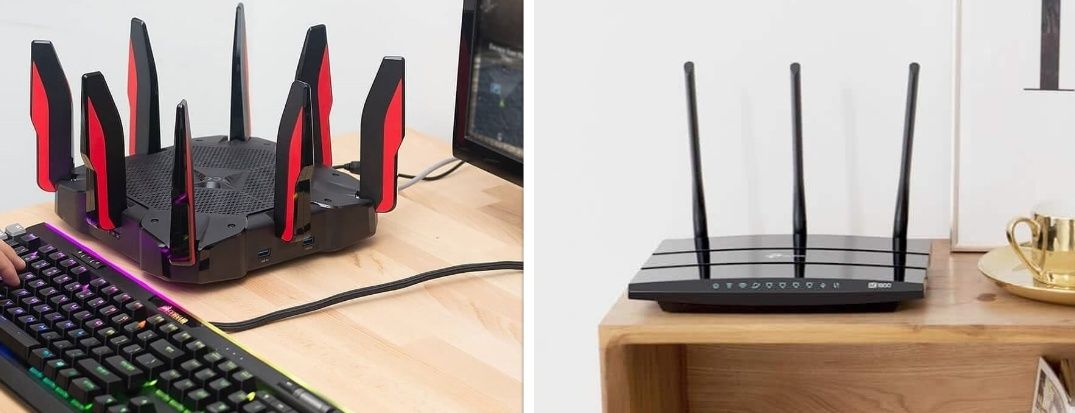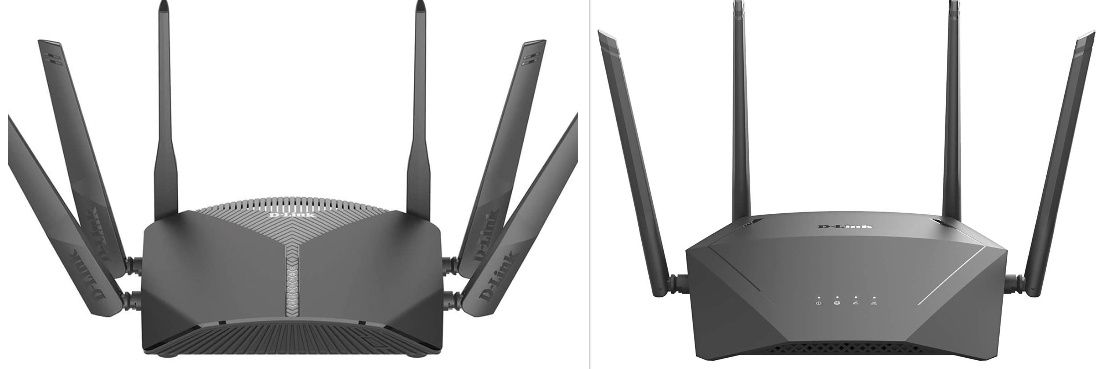We have come a long long way since the birth of the Internet. During the journey, we have had different technologies and devices. Today, most of the devices from lights to televisions, from fans to vacuum cleaners support WLAN. In order for WLAN to operate, we need one important device and it is none other than a Router. All these gadgets have made routers the most common and predominant networking device.
The most common question that arises while buying a router is Whether to go with a dual-band router or a tri-band router?

In this article, I will try to compare and contrast these dual-band and tri-band routers, their advantages and disadvantages so that you will have a better picture before making a purchase.
If you are looking to buy a WiFi router, we have an in-depth buying guide on wireless routers under $100. Don’t forget to check it out as it lists out the best of the best smart routers under 100 bucks.
What is a Dual-Band Router and Tri-Band Router?
Dual-Band WiFi Routers
Dual-band routers offer two different frequencies or bands. They are usually 2.4GHz and 5GHz and these routers run both the bands simultaneously. As you may know, the 2.4GHz channel is vulnerable to external interference. Also, the speed offered by the 2.4GHz channel is less than half the speed provided by the 5GHz channel.
Having said that, not all the devices especially older devices support 5GHz. While your devices work well with the 2.4GHz channel while surfing or checking mails, when you switch to more complex tasks like streaming, downloading, etc, your device automatically switches to the 5GHz channel providing you improved internet speed(Some routers may have selective frequency).
Advantages of Dual Band Routers
- Supports old as well as new devices (dual channels)
- Stable connection compared to single band routers
- Cheaper compared to tri band routers
Disadvantages of Dual Band Routers
- 5GHz channel has a lower range compared to 2.4GHz
- Speed decreases with multiple devices on 5GHz channels

TP-Link AC5400 Tri-Band Router vs TP-Link AC1900 MU-MIMO Dual-Band Wireless Router
Note: The number of antennas on the router does not signify the number of bands
Tri-Band WiFi Routers
In Tri Band Routers, you have the traditional 2.4GHz channel and two 5GHz channels. These two 5GHz channels are provided in case you have multiple devices running on this channel and your speed gets affected due to increased traffic. Generally for personal use, two 5GHz channels are not so necessary unless you are streaming 4K videos on multiple devices.
Ever wondered why 2.4GHz is slow? Well, the answer is very simple. Not only your router but many devices such as cordless phones operate in this frequency range causing high traffic and congestion. Whereas 5GHz channel has less traffic providing you improved performance.
Now you may ask is this 5GHz channel everything? Does it solve all your performance problems? Well, this 5Ghz channel transmits data faster but has a low range. Whereas the range of 2.4Ghz is longer but transmits data at a slower rate. So its a kind of mix and match.
As a rule of thumb, the higher the frequency, the transmission is faster but the wavelength is shorter and hence the range is smaller.
Advantages of Tri Band Routers
- Two 5GHz channel means high performance irrespective of multiple devices
- Supports old as well as new devices
- Stable connection compared to dual-band routers
- Lesser congestion and traffic flow
Disadvantages of Tri-Band Routers
- For personal use, two 5GHz channels might go unused
- The lower range of the 5GHz channel compared to 2.4GHz
- Price is much costlier compared to dual-band routers

DLink AC3000 Tri-Band Mesh Router vs DLink AC1700 Dual-Band Mesh Router
| Router Type | Dual Band Router | Tri Band Router |
| Suitable for | Personal/Residential Home/Apt | Office/Apartment Complex |
| Designed for | Streaming, Online Gaming | Multiple Streaming/Gaming simultaneously |
| Bands/Channels(Frequency) | 1×2.4GHz and 1x5GHz | 1×2.4GHz and 2x5GHz |
| Performance | High | Very High |
| Number of connected devices | Many | Many |
| Cost | Affordable (Higher than single band routers) | Expensive (Higher than dual band routers) |
Final Verdict
Today, single-band routers are not so useful just because they don’t offer the speed and convenience in accordance with the technology that we are in. Also, if you buy a 2.4Ghz router, you will lose the advantage of 5Ghz speed. If you buy a 5Ghz router, some of the smart home devices like smart bulb, plug, etc will not work in the 5Ghz channel. So, the solution is to go with a dual or triple band routers.
A dual band router has a 2.4Ghz and a 5Ghz channel which is perfect for small spaces such as a residential house or an apartment unit. A tri band router has one 2.4Ghz channel and two 5Ghz channels and is well suited for larger spaces like office, apartment block or hotels.
I hope you got a clear picture of what dual and tri band routers are and how they compare with one another. If you have any questions or suggestions, please leave them in the comment section below.
If you are looking to purchase a new Wifi router that is affordable, check our our buying guide on WiFi routers under $100. The list consists of the best dual and tri band routers
